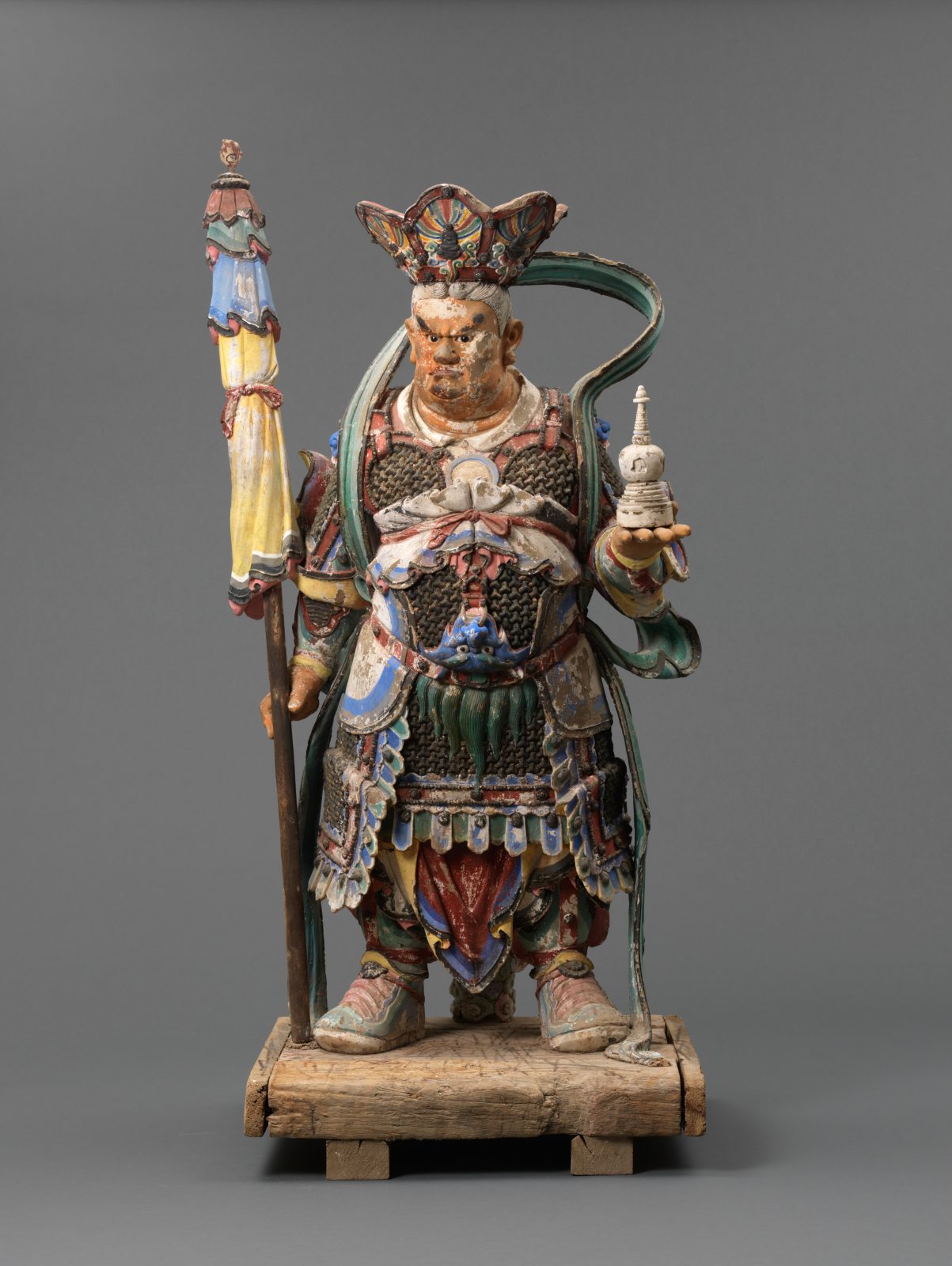
Virupaksha, Guardian King of the West; China; 17th - 18th century; Clay, polychrome, and stone with wooden base and interior armature; Rubin Museum of Himalayan Art; C2010.10

Virupaksha, Guardian King of the West; China; 17th - 18th century; Clay, polychrome, and stone with wooden base and interior armature; Rubin Museum of Himalayan Art; C2010.10
The work in the Rubin’s collection that I find most remarkable is a sculpture of Virupaksha, also known as the Guardian King of the West. Not only is it dynamic and brilliantly painted but it is one of the very few life-size sculptures in the collection. The figure has a fierce and engaging face with an intricately detailed costume. Behind the figure, a sash is raised and appears to be moving or blowing in the wind. This effect is not just lovely, but amazing—the fact that the sash remains intact is a surprise considering the material makeup of the sculpture.

Examination phase: Instability of the surface—flaking paint.
When the Guardian King came into the collection in 2010, the figure rocked slightly on its wooden base, and I was concerned about the stability of its structure, as well as the obvious fragility of the painted surface (see the photo above). I consulted with our conservators as to what steps we should take to preserve the figure.
We determined that the first step should be to stabilize the painted surface through a process called consolidation. Through the surface examination we ascertained that the figure’s condition and survival were extraordinary considering it was made of unfired earth bulked with straw and then painted with polychrome.

Straw peeking out of crack in structure.
The structure was more of a mystery, so we decided to send the Guardian King to a lab to be x-rayed. We found that the structure consisted of wooden posts nailed to the base and wrapped wire that was then overlaid with the unfired dirt and straw composition.

X-rays showing that interior wooden posts anchors foot to base with nails.

Schematic showing structural makeup.
I find it fascinating that the figure is so well intact, and yet made of such fragile components. It also amazes me that the dynamic sash was never broken in the sculpture’s long journey to the Rubin. Determining that it would most likely be too much stress on the figure to reinforce the structure, we decided the best course of action would be to leave it as is, and to just move the Guardian King as little as possible.

Michelle Bennett Simorella is director of global projects and collections at the Rubin Museum, bringing two decades of museum experience and leading collaborative projects. Working in Kathmandu, Nepal, for several years expanded her knowledge of art and practices in the region. Michelle has degrees in art history and nonprofit management.
Get the latest news and stories from the Rubin, plus occasional information on how to support our work.